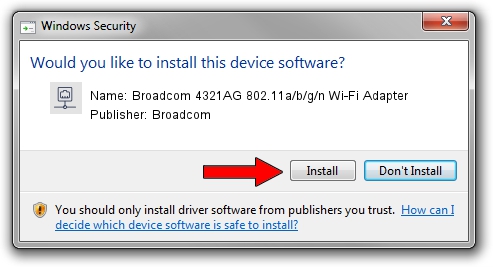고정 헤더 영역
상세 컨텐츠
본문
The Broadcom® 57810S from Dell™ is a dual-port 10GBASE-T Converged. Dell IMS SPARE Broadcom 57810S Dual Port 10Gb BASE-T Server Adapter. Camtasia 2018/Snagit 2018 Bundle (Electronic Software Delivery) (Mac / Win). The BCM5719 is a 13th-generation 10/100/1000BASE-T and 10/100/1000BASE-X Ethernet LAN controller solution for high-performance server and networking applications. The host interface supports a separate PCI Express function for each LAN interface.
I'm trying to do up a wiring diagram for a VMWare cluster in a remote data center. I typically will check the MAC addresses in VMWare VSphere client ( vmnicx) and/or use esxcli to do so from SSH on the ESXi hosts. I'll then log into the switch and look at the MAC table to see what port a MAC address was learned from and go from there.
Having an odd issue with Huawei CloudEngine 6800 series switches where the MAC address that's reported in the MAC table ( display mac-addresses include xxxx-xxxx-xxxx) is off on the last bit. For example, vmnic0 is one port on a Broadcom QLogic 57800 2x10GbE + 2x1GbE quad adapter, which reports as xx:xx:xx:xx:xx:b5. Filtering on xxxx-xxxx-xxb5 produced zero results in the filtering options. However, there's an entry for xxxx-xxxx-xxb6. I checked a few more NICs and it appears that it's just the Broadcom QLogic 57800 (and 57810) ones are the only ones with inconsistencies, both 10GbE and 1GbE: it's as if the MACs are all off by a bit ( c0 shows up as c1 on the switch, c2 as c3 and so on). Now I'm a bit rusty, but I know that converged interfaces can be 'sliced up' into sub-interfaces, which would have different MAC addresses, but that would also be represented higher up in the 'stack' in ESXi, so presumably the source MAC is being parsed out of the frame correctly. Just not sure if this is a 'UX' problem (the display mac-addresses command/switch has bugs) or potentially a driver/incompatibility issue or I'm missing something here.
Dell Broadcom 57810
Command Outputs: vmnic02 is the only MAC address that's reporting 'correctly'. I guess you can assume that b5 is what the Huawei thinks is b6 and b7 is what the Huawei thinks is b8, but I have no explanation as to why. Rereading your question, I'm pretty sure what the cause is: it's a dual NIC and you just mentioned a single MAC. Dual or quad NICs often (always?) have consecutive MAC addresses(.) and xxxb6 is just the 2nd port. Depending on your vSwitch NIC teaming/load-balancing setup, the first port may not be in use - so it's invisible in the upstream switch. Open the vSwitch and check the Management Network NIC settings: it shows the MAC the host's network connection uses. On our hosts, it's that of the first NIC listed in vSwitch - NIC Teaming.
Broadcom Netxtreme 57xx Gigabit Driver

If you do want to always use the first ports MAC you can set specific Management Network teaming with the second port only as fallback. Both ports active will arrange a somewhat random binding of Management Network to physical port. (.) Our quad NICs with iSCSI option use every other MAC for normal Ethernet. (Would prefer to comment but not enough reputation.) If I was troubleshooting this on my network, first thing I'd do is run a packet capture from the vmware side. This will confirm what MAC is being sent to the Broadcom switches. You might also try plugging the same port into a different switch to see if the MAC changes. I'd also be curious to view upstream switches to see what MAC the Broadcom switches are passing on (presumably the same +1 MAC, right?).
Broadcom 57810s Drivers For Mac
My intuition says that the vmnic is passing on the +1 mac (Cisco devices increment their MACs for each interface, maybe something similar for vmware?) or there's ahem human error involved at some point.




